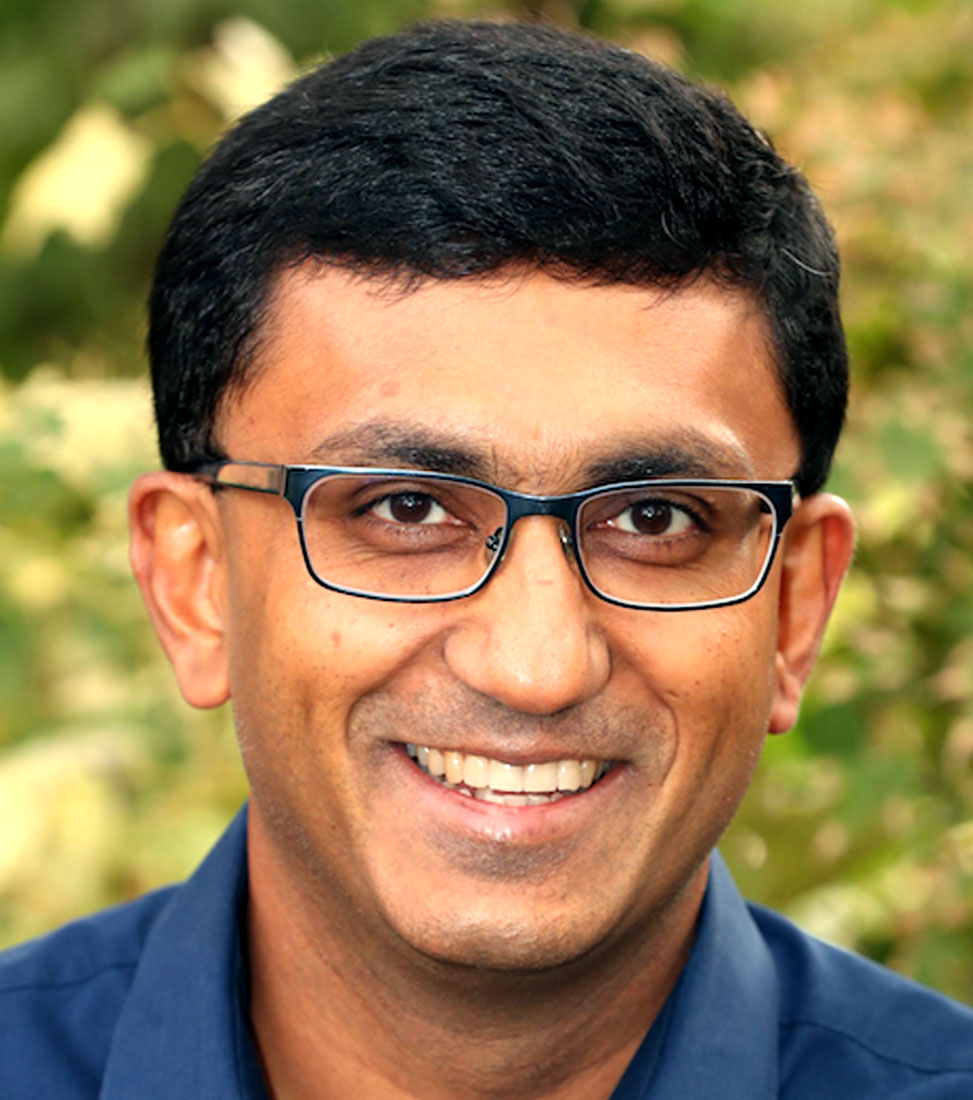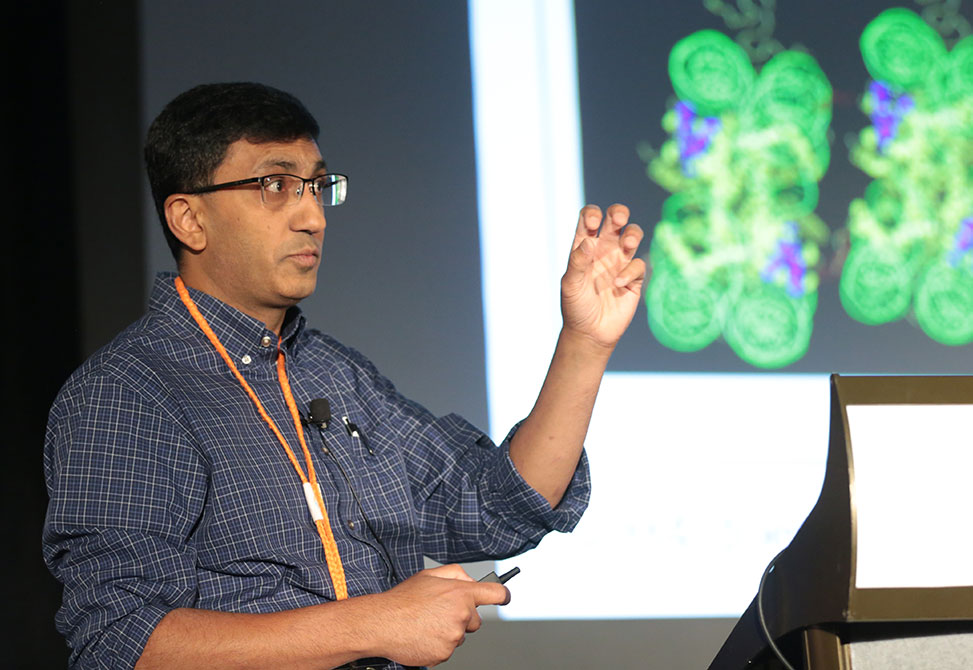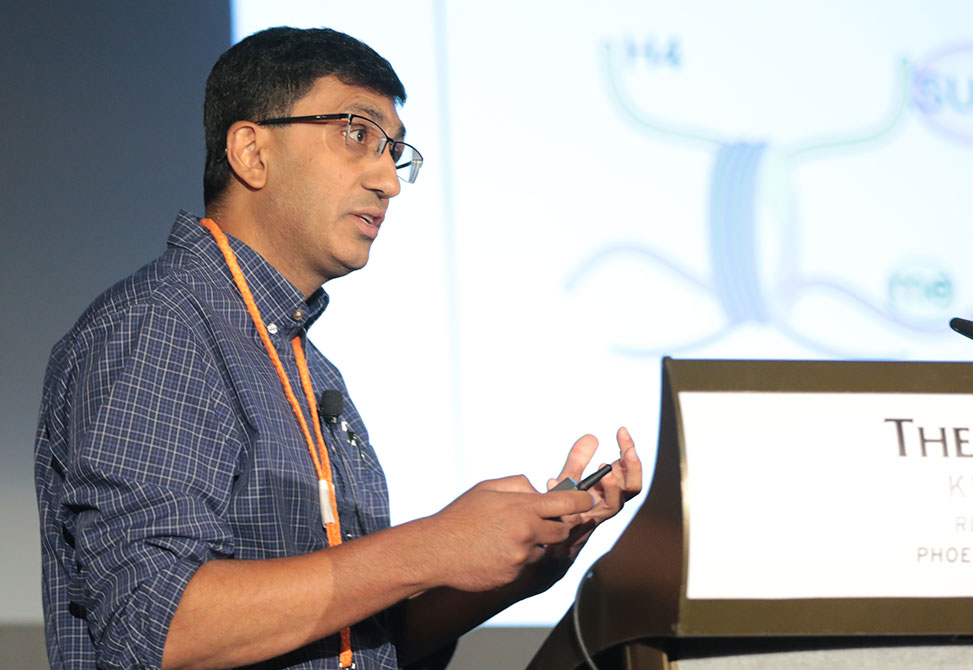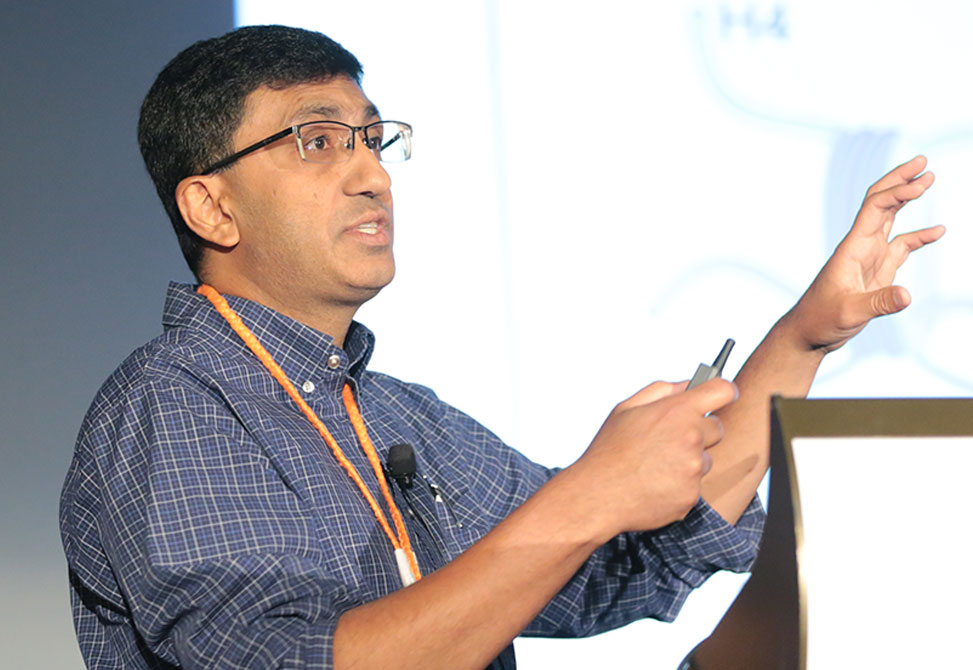Champak Chatterjee
University of Washington
Talk Title
SUMO: Wrestling with Gene Transcription
Presentation Time
SESSION 2: PROTEIN MODIFICATIONS FOR ENABLING BIOLOGY
Sunday, June 25, 2023, at 10:50 am - 11:15 am
The small ubiquitin-like modifier protein, SUMO, is found in all eukaryotic organisms where it plays key roles in regulating protein conformation, localization, and function. Enzymatic conjugation of SUMO with lysine side-chains in protein substrates, called sumoylation, is a tightly regulated and highly dynamic process in our cells.
Two biomedically important families of nuclear proteins modified by SUMO are transcription factors and histones. The mechanistic contribution of SUMO to their critical roles in gene regulation, however, are largely unknown due to the low abundance and dynamic nature of these sumoylated proteins.
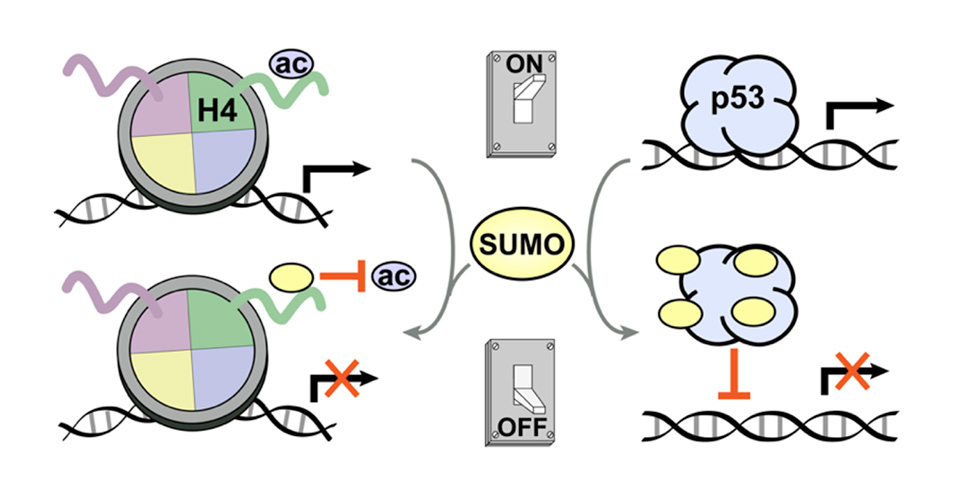
We addressed this challenge by developing novel synthetic, semisynthetic, and molecular biological strategies to access site-specifically sumoylated human histone H4 and the transcription factor p53. 1 Biochemical studies with the uniformly modified proteins revealed that SUMO inhibits RNA polymerase II mediated gene transcription in both contexts, but through distinct mechanisms. 2
Results from our mechanistic studies, including the discovery of novel biochemical crosstalk between sumoylation, acetylation, and methylation, will be discussed in the context of human gene regulation by SUMO.
References
1. Singh, S. K., Reyna, A., Xie, X., Mao, H., Ji, M., Zheng, N., Hsu, P. L., Chatterjee, C. Total chemical synthesis of sumoylated histone H4 reveals negative biochemical crosstalk with histone ubiquitylation. Chem. Commun. 59, 4063-4066, 2023.
2. Leonen, C. J. A., Shimada, M., Weller, C. E., Nakadai, T., Hsu, P. L., Tyson, E. L., Mishra, A., Shelton, P. M., Sadilek, M., Hawkins, R. D., Zheng, N., Roeder, R. G., Chatterjee, C. Sumoylation of the human histone H4 tail inhibits p300-mediated transcription by RNA polymerase II in cellular extracts. Elife 10, 10.7554, 2021.
Champak was born in Kolkata but raised in the cricket capital of the world, Mumbai, India. He and his wife, Dr. Leah Miller, lived in Champaign-Urbana and New York City before arriving in Seattle in the summer of 2010. Champak earned his Ph.D. in Chemical Biology from the University of Illinois at Urbana-Champaign and invented disulfide-directed protein ubiquitylation as a postdoctoral researcher at The Rockefeller University.
The Chatterjee lab in Seattle strives to apply atom-efficient and water-compatible synthetic strategies for protein chemistry in order to understand eukaryotic gene regulation by protein post-translational modifications. New trainees in the Chatterjee lab can expect to master techniques in peptide and protein synthesis, bioanalytical and biophysical measurements, molecular biology and mammalian cell culture. Former trainees from the Chatterjee labs have gone onto assistant professorships, Keystone College, PA, startups, Revolution Medicines, CA, postdoctoral research, Harvard Medical School and The Rockefeller University, and lectureships, Baylor University and UW Bothell. The Chatterjee lab is a firm believer in mens sana in corpore sano and hiking is the most popular group activity.
